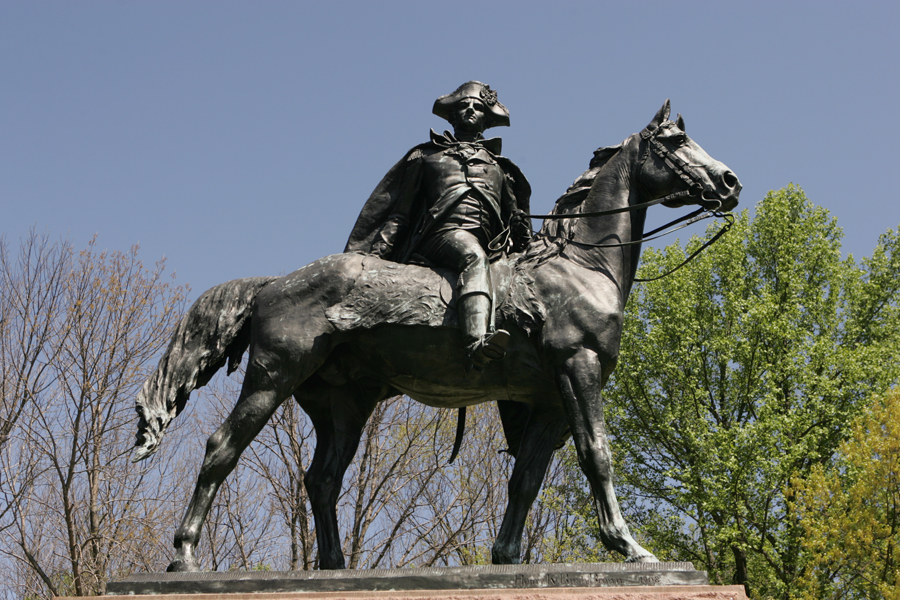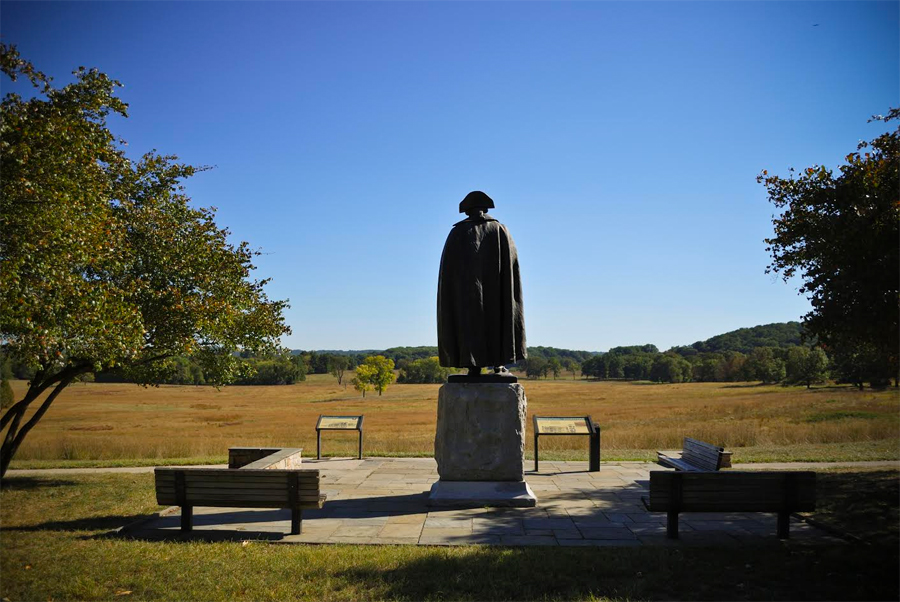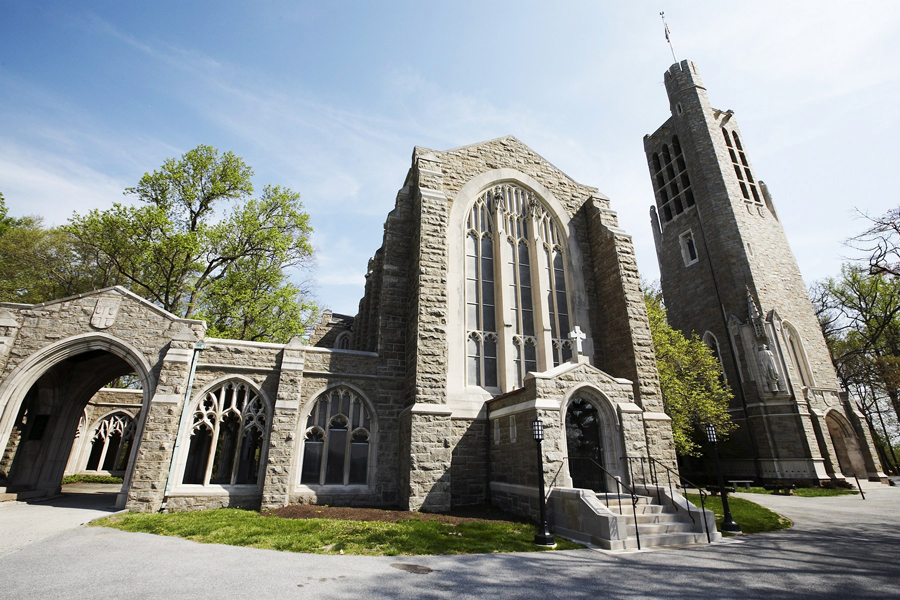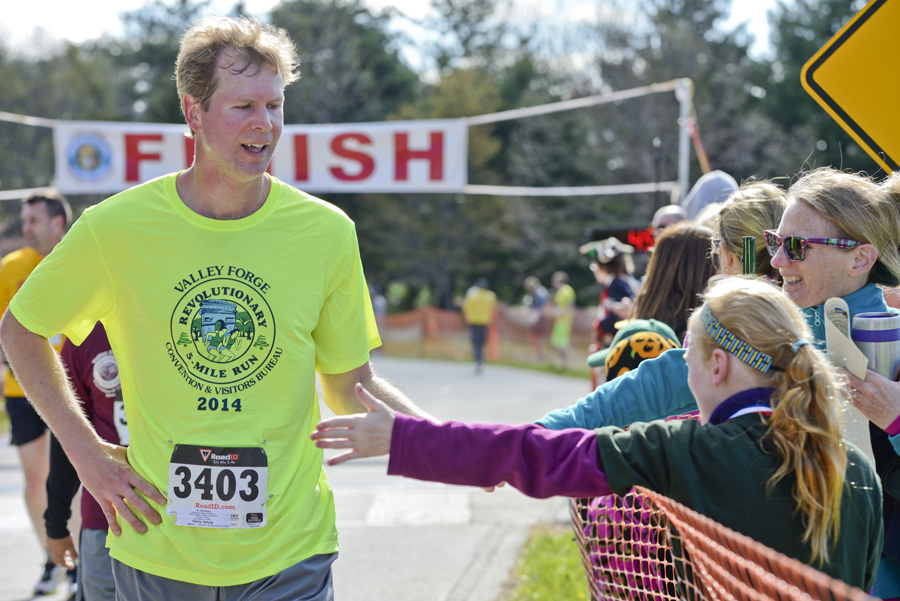
The course of the Valley Forge Revolutionary 5-Mile Run® loops through the historic acreage of Valley Forge National Historical Park. Participants in the April 19 event enjoy up-close-and-personal views of the statuary, exhibits and memorials, which are much more engaging when viewed on foot, rather from the distance of a passing car.
Although some runners may prefer to focus on their pace and
progress, others will want to know what they're seeing along the five-mile
course. Walkers, too, can more fully enjoy the event if they pack a little
background knowledge along with their water bottles.
The following guide, taken in part from our Patriot Trails itineraries, spotlights
the sights along the way:
Runners'/Walkers' Course (shared for the initial 1.5 miles)
Start
Muhlenberg Brigade
This section of the park included the outer line of defense against the British housed in Philadelphia. Peter Muhlenberg and his 8th Virginia Regiment were housed here, in huts much like those that have been historically re-created for visitors. The stack of logs near the Rev Run starting line will soon become four new huts in the brigade.

Redoubts and Redans
When facing the start line, take note of several of the hilly mounds to the left and right. These are redoubts, a trench-like manner of fortified defense. The v-shaped earthwork are redans, a projected form of fortification. Runners along the five-mile course will see multiple examples of these military posts.
End of mile 1
National Memorial Arch End of mile 1
The United States National Memorial Arch is probably the park's most recognizable symbol. Standing 60 feet high, the arch has towered above Valley Forge since its dedication in 1917. The inscription reads: "Naked and starving as they are We cannot enough admire The incomparable Patience and Fidelity of the Soldiery"

Pennsylvania Columns Mile 1.5 (approx.)
A pair of tall, granite columns mark the point at which
walkers return to the start line. These Pennsylvania Columns were erected in
1912 and feature two bronze plaques containing the
bas-relief busts of Colonial military officers. Atop each column is a bronze
eagle with outspread wings, standing on a granite ball.

Walkers "about face" and return to the start line; runners continue on full five-mile course
Mile 1.5-2
"Mad" Anthony Wayne Statue
Runners will dig deep as they continue, facing the highest point in the course. Memorialized forever on horseback, General Anthony Wayne saw action in some of the most strategic battles of the Revolution, including Brandywine, Germantown and Monmouth. During his presidency, Washington appointed Wayne Commander-in-Chief of the U.S. Army.

Miles 2-3
Water stop at Artillery Park
Climbing the elevation next to the Wayne statue requires rehydration afterward. A water stop has therefore been strategically placed to meet the need. Artillery Park, to the right of the trail, was so named for the cannons that were stored, repaired and maintained there, strategically ready should the need arise with little or no notice.

Site of the Marquee
"Marquee" (or "marquise") is a Britishism for a large tent with open sides. This marker notes the spot where Washington's original canvas quarters were located for a few days in December 1777, before he relocated the Isaac Potts House, a onetime grist mill.
Trace road
As runners approach Route 23, they parallel the former trace road on which the Continental Army marched out of Valley Forge in June 1778. Their destination? New Jersey and further engagement of the British troops.

Miles 3-4
Von Steuben Statue
The transformation of the Continental Army into a unified force was an initiative of General Washington, but carrying out the plan was General Friedrich Wilhelm Augustus von Steuben of Prussia (now Germany). His training regimen became the basis for Regulations for the Order and Discipline of the Troops of the United States, which served the United States Army through the War of 1812.

Varnum's Quarters
General James Varnum arrived in Valley Forge with a brigade of troops from Connecticut and Rhode Island, his home state. During his stay, Varnum took up quarters in a stone farmhouse owned by David Stephens.

The Grand Parade
Much of the training done by General von Steuben took place in this wide, open area, from marching to defensive/offensive formations to firing sequences.

Washington Memorial Chapel
The Chapel was erected as a tribute to George Washington and the entire Continental Army, but it is also is home to an active and welcoming Episcopal congregation.

Patriots of African Descent Monument
This marker, erected in 1993, commemorates the estimated 9,000 soldiers of African Descent who served during the Revolution, including the encampment at Valley Forge.

Miles 4-5
Location of new Sullivan Bridge
Just before the last eastward turn of the course, the construction of the new Sullivan Bridge can be seen. This project will connect Valley Forge to the Schuylkill River trail heading westward, with a linkage to the Perkiomen Trail and the northwest part of Montgomery County. Completion of the bridge is estimated for 2016. Future Rev Run funds will support maintenance of the bridge.
Visitor Center
By now the cheers of the crowd should be spurring runners onto the last quarter mile. On the right is the park's Visitor Center, a source of information on not only the site's ties to the Revolutionary War, but also on tourism possibilities throughout Montgomery County.

Finish Line
Congratulations! You have Conquered the Valley!







